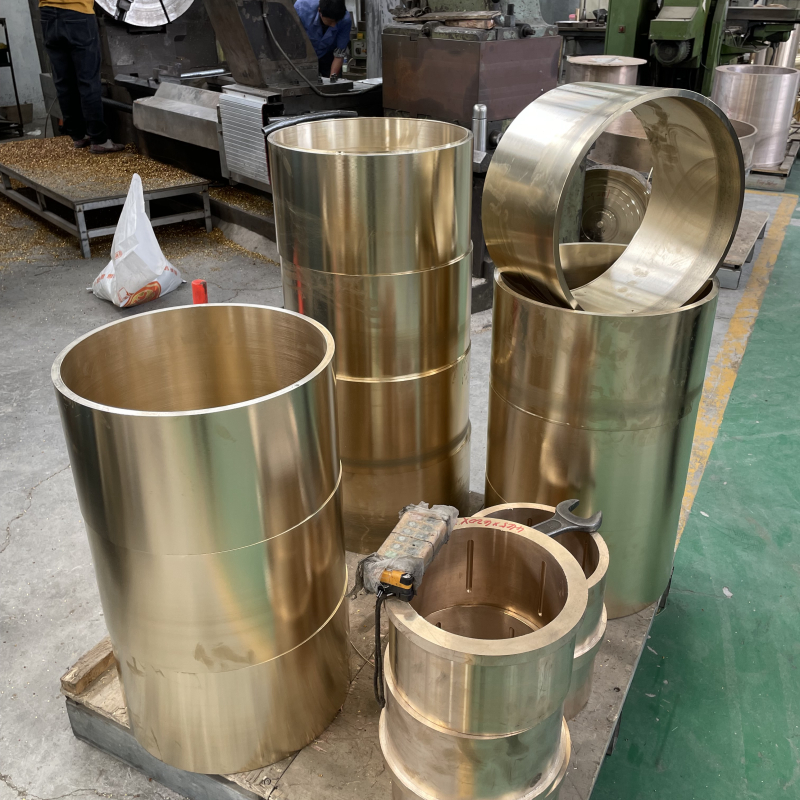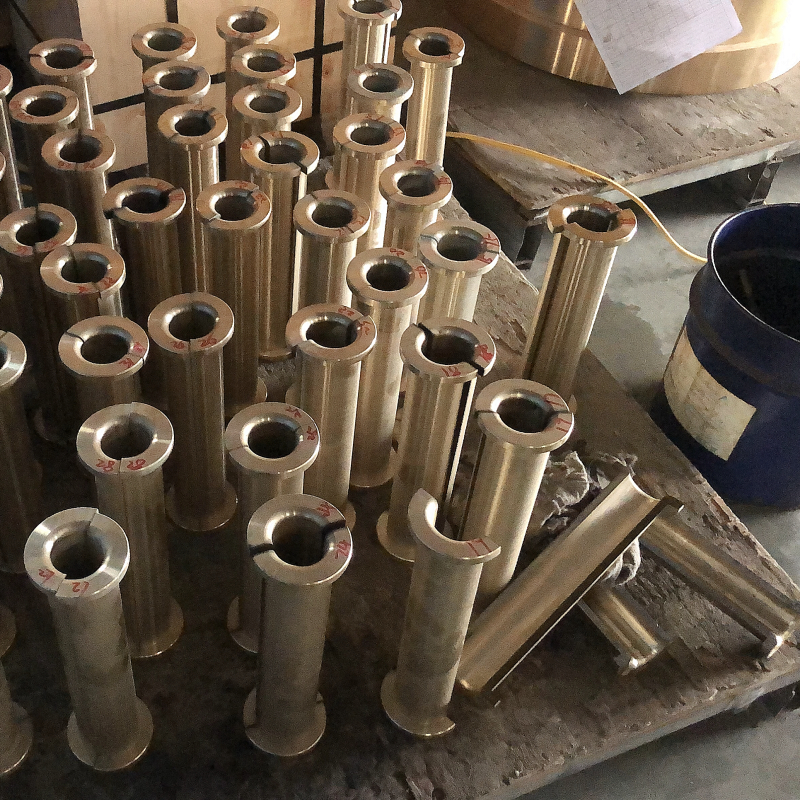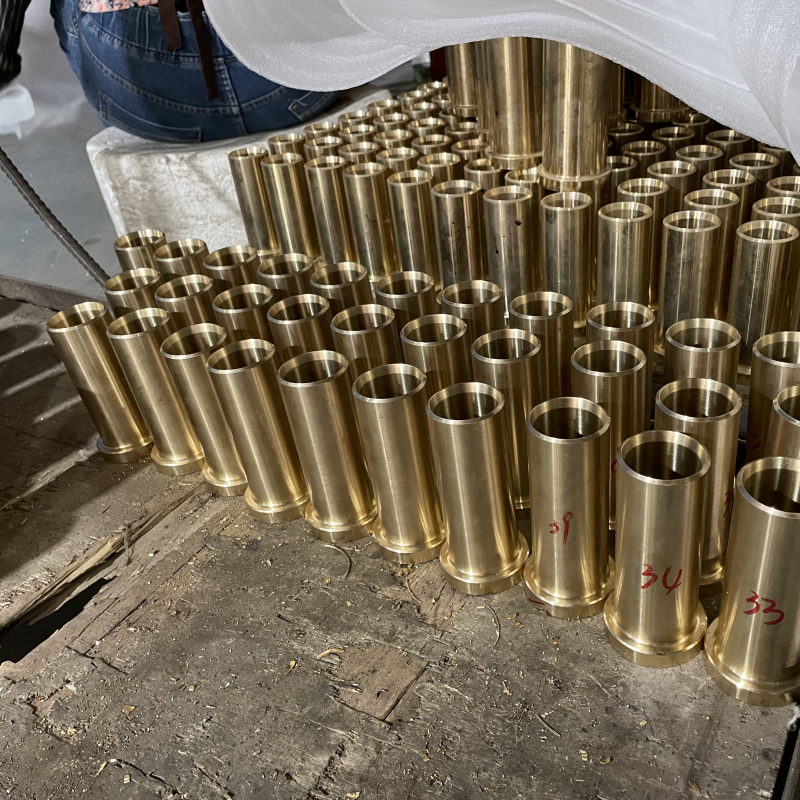The mechanical properties of copper bushings (copper sleeves) are influenced by the specific copper alloy and manufacturing process used. Here are the key mechanical properties of copper bushings:
1. Tensile Strength
Tensile strength refers to the maximum stress that copper bushings can withstand while being stretched or pulled. Copper bushings made from copper alloys, such as bronze or brass, typically exhibit high tensile strength.
2. Yield Strength
Yield strength is the stress level at which a material begins to deform plastically. Copper bushings made from certain alloys (e.g., bronze or brass) exhibit high yield strength, making them resistant to permanent deformation under load.
3. Hardness
Hardness varies depending on the type of copper alloy used. Common hardness testing methods include Brinell, Rockwell, and Vickers. Harder copper alloys, such as bronze, offer better wear resistance, prolonging the lifespan of the bushing.

4. Ductility
Ductility is the ability of the copper bushing to deform under tensile stress without breaking. Pure copper and some copper alloys exhibit excellent ductility, allowing the bushings to absorb impacts and vibrations without cracking or failure.
5. Wear Resistance
Copper bushings are often used in high-friction environments, making wear resistance a crucial property. Copper alloys such as bronze, which contain elements like tin or aluminum, offer superior wear resistance, making them suitable for bearings and sliding components.
6. Corrosion Resistance
Copper alloys exhibit excellent corrosion resistance, particularly in moist environments, saltwater, or when exposed to chemical media. This ensures that copper bushings can perform reliably in harsh environments without significant corrosion.

7. Impact Toughness
Impact toughness is the ability of the material to resist fracture under sudden or impact loads. Copper bushings generally have good impact toughness, making them suitable for applications where they may experience dynamic or shock loads.
8. Fatigue Strength
Copper bushings exhibit good fatigue strength, which means they can withstand repeated or cyclic loading over time without failure. This property is particularly important in rotating equipment where the bushing experiences cyclic stresses.
9. Coefficient of Thermal Expansion
Copper bushings have a relatively high coefficient of thermal expansion, meaning they expand when heated. This property must be considered in high-temperature applications to avoid issues related to thermal expansion and fitment.
10. Electrical and Thermal Conductivity
Copper and its alloys exhibit excellent electrical and thermal conductivity, making copper bushings suitable for specific applications where efficient heat dissipation or electrical conductivity is important, such as in electrical equipment or high-temperature environments.

These mechanical properties vary based on the specific type of copper alloy used, such as brass, bronze, or pure copper, and are tailored to meet the requirements of different applications.
| Previous:What is the difference between a benchtop spectrometer and a portable spectrometer? | Next:How does the tensile test affect the yield strength of copper? |




 Copyright © 2022
Copyright © 2022